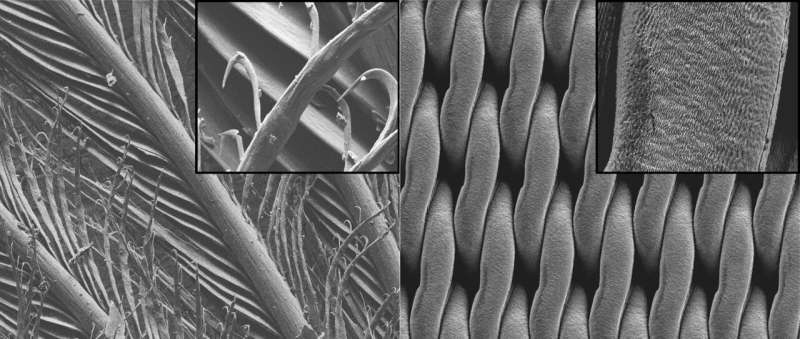During the Great Ice Storm in 1998, ice accumulation on power lines as well as electric towers dragged the northern United States and southern Canada to a halt, leaving many people in the cold and dark for days, if not weeks. Dealing with ice formation on wind turbines, electric towers, unmanned aerial vehicles, or airplane wings often requires time-consuming, costly, and/or energy-intensive processes, as well as numerous chemicals. However, by appealing to nature, McGill University scientists claim they have discovered a possible new approach to the problem. Their idea comes from Gentoo penguin wings, which swim in the ice-cold waters of the south polar area with pelts that maintain ice-free even when the external surface temperature is much below freezing, according to the university's official statement.
Anne Kietzig mentioned that their team first looked at the properties of the lotus leaf, which is exceptionally efficient at releasing water but less successful in shedding ice and has been looking for a solution for over a decade.
The associate professor of Chemical Engineering at McGill as well as head of the Biomimetic Surface Engineering Laboratory stated that the process wasn't easy until they started looking into the properties of penguin feathers and they identified a natural material capable of shedding both water and ice.
Thin Wire Mesh That Mimics the Water and Ice-Shedding Properties of Penguin Feathers
The scientists discovered that the hierarchical configuration of the feathers itself provides water-shedding qualities, whereas their barbed surfaces reduce ice adhesion, as described by Michael Wood, who worked with Kietzig and who is one of the co-authors of a new paper published in ACS Applied Material Interfaces. They were able to duplicate these combination effects using a laser-machined interwoven wire mesh.
The claim may sound counterintuitive, but the answer to ice scattering is all the holes in the mesh that suck water in under blizzard conditions, Kietzig continued. The moisture within those pores will be the last to freeze, causing splits as it spreads, he set an illustration just like the ice bucket trays in a regular freezer.
Based on a National Geographic report, gentoo penguins shine out in their dreary, rock-strewn Antarctic home with their showy red-orange beaks, white feather crowns, as well as peach-colored feet. These spectacular waddlers, who dominate the Antarctic Region and other islands surrounding the freezing peninsula, are the penguin world's third biggest members, standing 30 inches tall and weighing 12 pounds.
Gentoos prefer ice-free environments, such as coastal plains, protected valleys, and cliffs. They congregate in swarms of breeding couples that can range in size from very few dozen to several thousand.

The image on the left shows the microstructure of a penguin feather (the 10 micrometer closeup of the inset is the equivalent of 1/10th of the width of a human hair, to give a sense of scale) Those barbs, and barbules are branches off the feather’s central stem. The ‘hooks’ serve to attach individual feather hairs together into a mat. On the right is the stainless-steel wire cloth that the researchers decorated with nanogrooves that copy the hierarchy of the penguin feather structure (wire-like with nanogrooves on top).
ALSO READ: Most Comprehensive Penguin Evolution Study Reveals Threats of Cold-Adapted Species to Global Warming
Early Test Findings Seem Promising
Wind tunnel tests of materials enclosed by the steel mesh revealed that the technique was 95% more successful in preventing ice buildup than an unenveloped sheet of brushed stainless steel. Because no chemical methods are used, the novel method may give a maintenance-free solution to ice formation on wind turbines, electric towers as well as power lines in addition to drones.
As Phys stated in their report, Kietzig emphasized that, given the multitude of restrictions in existence in passenger flight and the hazards associated, it is doubtful that airplane flaps are going to be simply coated in metal mesh.
Kietzig said that it is possible; however, the surface of plane wings will one day incorporate the kind of texture that the researchers are exploring and de-icing will occur as a result of a combination of conventional de-icing processes that cooperate in wing surfaces that incorporate surface texture clearly influenced by penguin feathers. Although further study is needed, the preliminary findings are promising.
RELATED ARTICLE: 100 Dead Penguins Found Near New Zealand Beach; Is This A Sign of Extinction for the Said Bird Species?
Check out more news and information on Animals in Science Times.














